Choosing a backpack that’s right for you is no easy task. There are a bunch of things to consider from comfort to practicality and whether all those added features of the backpack you have been eyeing up are really necessary.
What’s more, you’re contending not just with an overwhelming selection of choice but with the knowledge that if you choose the wrong backpack, your trip will suffer.
There’s nothing worse than hiking up a mountain with straps that dig into your shoulders and the weight of your supplies hitting the least comfortable part of your back.
You push through and continue your climb through gritted teeth only to get to the top and realize that you now have no dry clothes, thanks to the rain which has soaked through your non-water resistant material.
On the other hand, choosing the right backpack can make your climb that bit easier. If a backpack fits properly, the weight of your supplies will be distributed comfortably and the straps will sit nicely on your shoulders.
What’s more, if you nail your first backpack purchase, you could find yourself in possession of a product that will serve you well for the north side of ten years.
Consequently, we have assembled an all-encompassing guide to your first backpack purchase. We will take you through all the details from size and weight to the perfect hip belt. In fact, we have considered just about everything so that the only variable you need to think about, is yourself.
1. The basics: size, weight and design
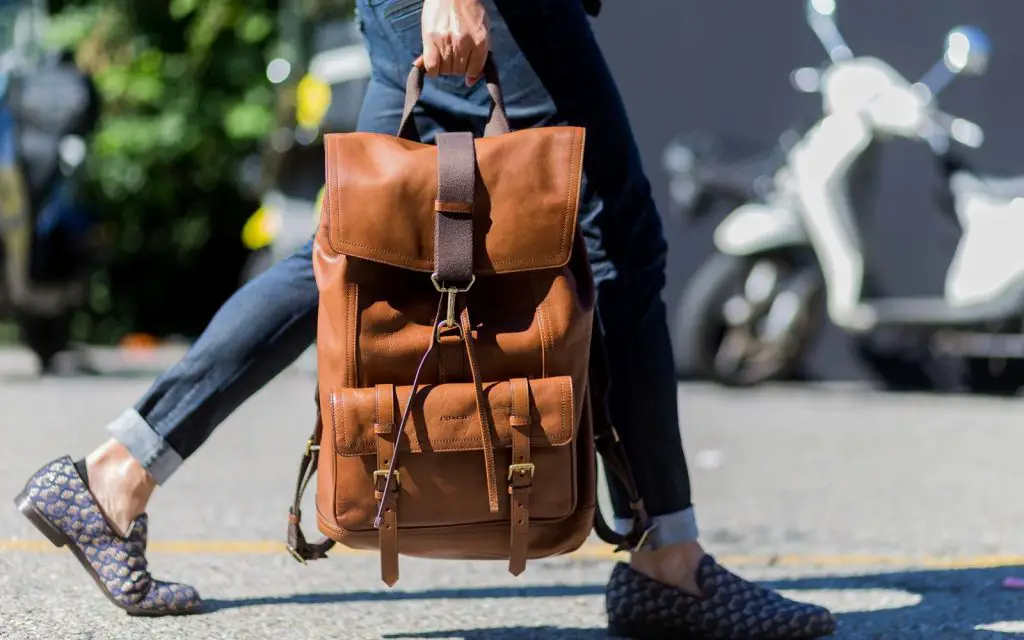
In this section, I will guide you through the basics of what to look for when it comes to the fundamental design of the bag.
Unfortunately, I cannot tell you what the universally perfect size is for a backpack, but I can give you a ballpark to work within so that you can determine the sweet spot between a size that holds all your things and a size that won’t topple you over if the wind blows the wrong way.
Size
It’s All About Proportions
To understand how to choose the right backpack, you first need to understand your own body. If your backpack is proportional to your body, the weight will be better balanced and you won’t risk toppling over thanks to the extra person-sized pack strapped to you.
The best thing to do is to measure your torso from your tailbone to the back of your neck. Although manufacturing sizing varies, this will give you a rough idea of what sort of size you are looking for.
Take a look at backpacks which are designed on torso length so you can get an idea of the right size for you. Of course, the only way to truly know if you have succeeded is to try it on and see how it feels.
It Needs To Hold Your Stuff
Ok, this might be obvious but what I mean by this is that it needs to hold your stuff and not much more. It’s good to have a little room spare in case you pick up anything extra on the way, but you don’t want to have lots of room left over.
Too much extra room is unnecessary and will affect how comfortably the pack sits on your back. The right size is a backpack which holds everything you want to bring with a little extra room, and feels comfortable on you.
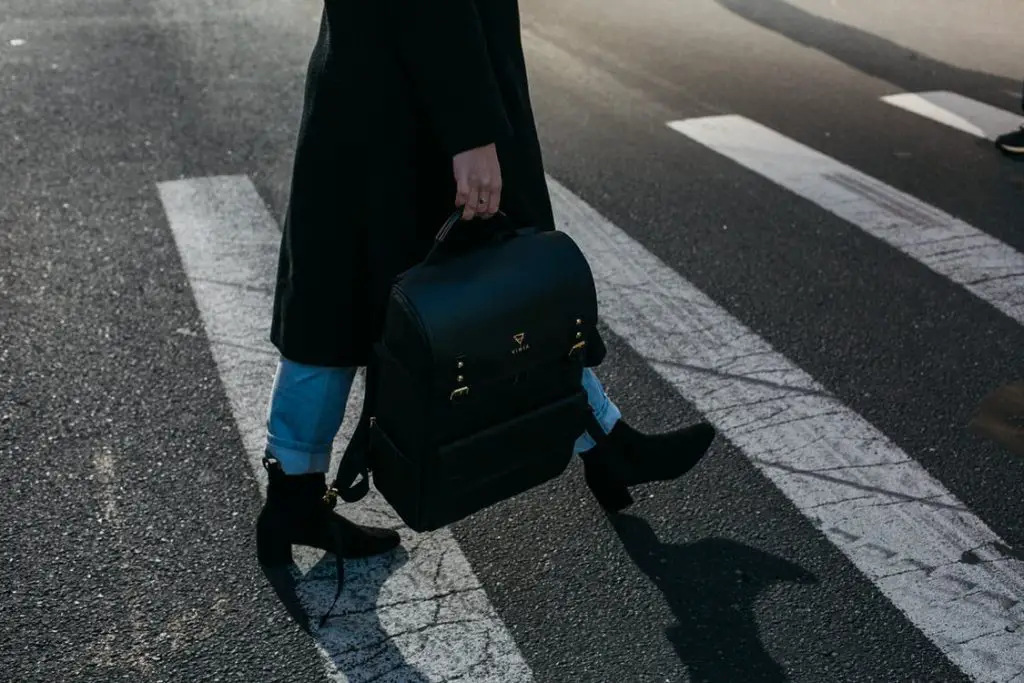
Consider Airline Restrictions
Generally, if you are planning on going away for a long period of time, you will be looking at choosing a bag which has a capacity of over 50 litres and consequently has no chance of coming with you as a carry-on item on a plane.
On the other hand, if you are planning on a short trip it is worth considering whether or not you will have to pay extra fees to check in your bag. As someone who take a lot of weekend trips abroad, it was important to me that I picked a backpack which could be stored in the overhead bin on budget airlines.
The standard cabin size for Ryanair is 55 x 40 x 20 cm, so my weekend backpack is just a little smaller than this. Most products will tell you in the description if they are cabin-size.
Of course, if you are not fussed about checking in your bag or are looking for a backpack suitable for far longer trips, this will not apply to you.
Weight
The Sweet Spot Between Lightweight and Protection
Another factor to consider is the weight of the backpack. Naturally, if you want a lighter load then it seems intuitive to opt for a lighter weight backpack. The trouble is that the ultra lightweight backpacks tend not to offer much protection or padding.
If you are only carrying clothes, this might not be a problem but if you have equipment such as your laptop or a camera, they risk being damaged if stored in a product which offers little protection.
Again, it is entirely up to you and your needs when it comes to the right weight for your backpack. If you are carrying expensive equipment, heavy metal mesh protection is a bonus but if you are only bringing a disposable camera in your pocket, metal mesh is redundant added weight.
This is especially important if you are planning on choosing a backpack that can be used as a carry-on airplane item as many airlines have a 10kg limit. You ideally want this weight to come from your luggage and not the bag itself.
Unfortunately, there is no definitive formula for finding the sweet spot between lightweight and reasonable protection. It instead requires a little intuition in the form of considering what your typical load consists of and whether extra padding and protection is a must-have or a burden.
Design
Choosing The Right Material
The material your backpack is made from determines a number of outcomes. Not only does the material inevitably determine the weight of your backpack, it can be the difference between whether your clothes stay wet or dry and whether your backpack is for life, or for Christmas.
- Water Resistant: Unless you are planning on trekking through the rainforest, it is unlikely that you really need a backpack that is 100% waterproof. Still, from tent damp to light drizzle, you need at least some protection from water so that your clothes don’t get damp or musty. Nylon is probably the most reliable material when it comes to the required level of protection. If you get caught in the rain, a good quality nylon back should give your luggage the cover it needs.
- Mesh Back Panel: When you are carrying a heavy load for a long distance, getting a bit hot and sweaty is inevitable. Some materials are bound to make the back sweat much more of a problem than others. Keeping cool is an important part of staying comfortable and so it is consequently important that you choose a backpack which offers decent ventilation. Products with mesh back panels allow airflow so that you can keep cool, but also reposition the weight of your luggage so that the pressure is redirected from your back.
To sum up, the best material is usually going to be high quality nylon fiber with a mesh back panel or foam padded back frame so you can keep both the clothes in your bag and the clothes on your back dry as a bone.
Make Sure It Has An Internal Frame
Generally speaking, an internal frame should be a given, but it is always good to check just in case. Backpacks with internal frames have the frame built into the product rather than come with attachable rods which stick out from the bag.
It is not just the case that internal frame backpacks look a hell of a lot more attractive, they are also much more practical. These kinds of backpacks are more durable and tend to be lighter too.
Moving around with rods sticking out can be a challenge so my advice is to avoid this type altogether.
Compartments Are Your Friend
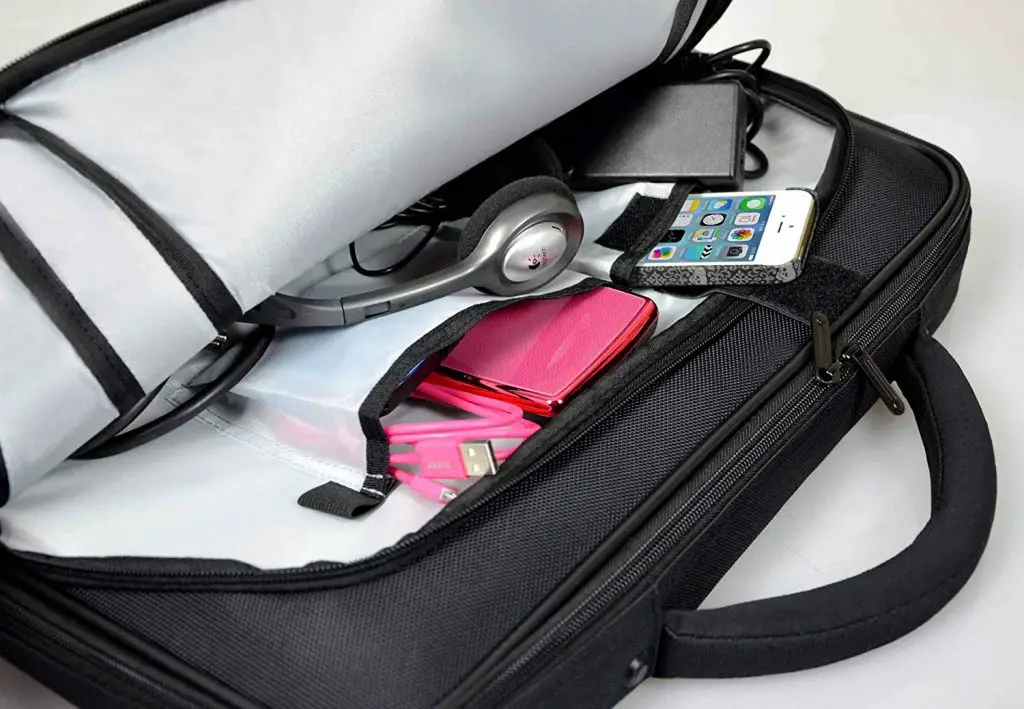
A backpack with multiple compartments is always better than a single compartment backpack with one or two pockets. There are countless advantages to dividing your belongings into multiple sections.
First, easily-accessible pockets and sections are great for storing your important belongings. If your torch or your keys are wedged in between your trainers and your clothes, it’s going to be a hassle finding them in an emergency or otherwise.
Multiple sections also means you can keep your clean clothes away from your dirty clothes and make getting ready in the morning a hundred times easier.
Additionally, multiple compartments also has benefits when it comes to your comfort. If all your belongings are stored in one section, this increases the weight at the bottom and back of your bag.
Alternatively, storing your belongings across multiple sections spreads out the weight making it easier to carry.
Finally, it is wise to check whether that are two zippers on the main compartment. This means that you can easily lock up your luggage, making it far more difficult for anyone to get in and steal your belongings.
Section Summary:
- Choose a backpack that has an appropriate size in proportion to your torso.
- You don’t need tonnes of spare room.
- Be conscious of airline restrictions if you are a frequent flyer.
- Make sure any heavy protection on your backpack is essential and not a burden.
- Choose water-resistant material and opt for a mesh back panel.
- Internal frames over external frames.
- Choose a backpack with multiple compartments and pockets for essentials.
2. The Essentials: Shoulder Straps & Hip Belts
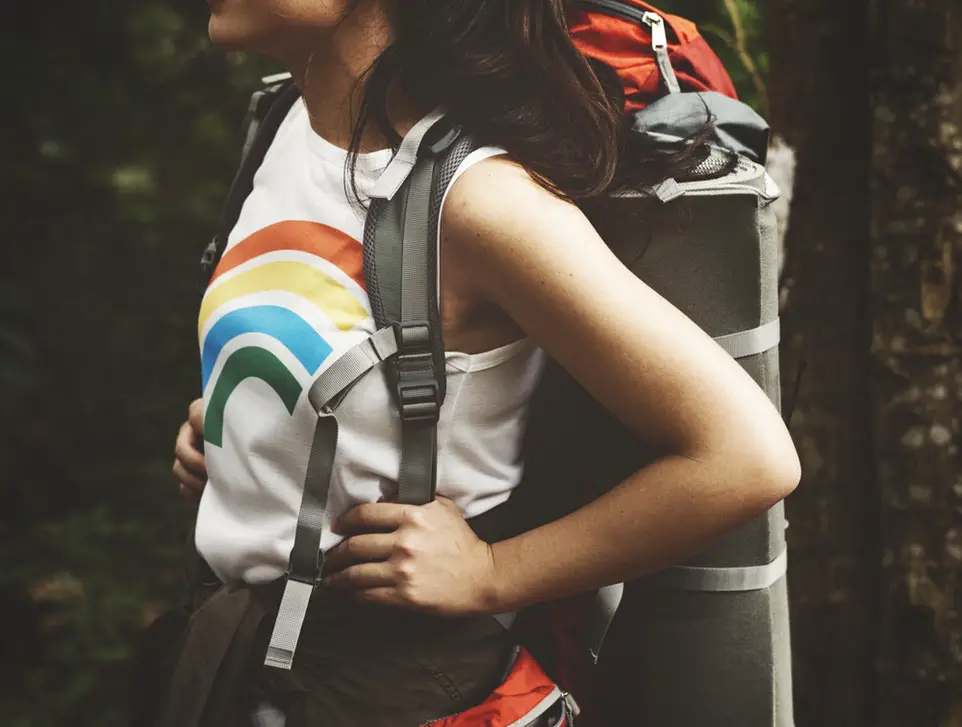
This next section is focused on choosing straps which reduce strain on your back and shoulders and help make your backpacking experience as comfortable as possible.
At the end of the day, weight is still weight, but if your backpack fits properly, you can carry this weight in the most comfortable way possible. Trust us when we tell you, it’s all in the straps.
Shoulder Straps
Don’t Underestimate Padding
I cannot emphasize enough how important it is that your backpack is comfortable. It really does suck when you find yourself dreading putting your backpack on in the morning because you have back pain from the afternoon before.
One way to minimize this risk is to go for properly padded shoulder straps. Make sure the padding is very thick so that the weight pushing down on your shoulders is dampened and the impact on your lower back and shoulders is reduced.
This really can be the difference between waking up with back pain or waking up excited to start your day.
Bonus tip: Make sure the padding is made of a breathable material because shoulder sweat is definitely a thing.
S-Shape Is The Best Shape
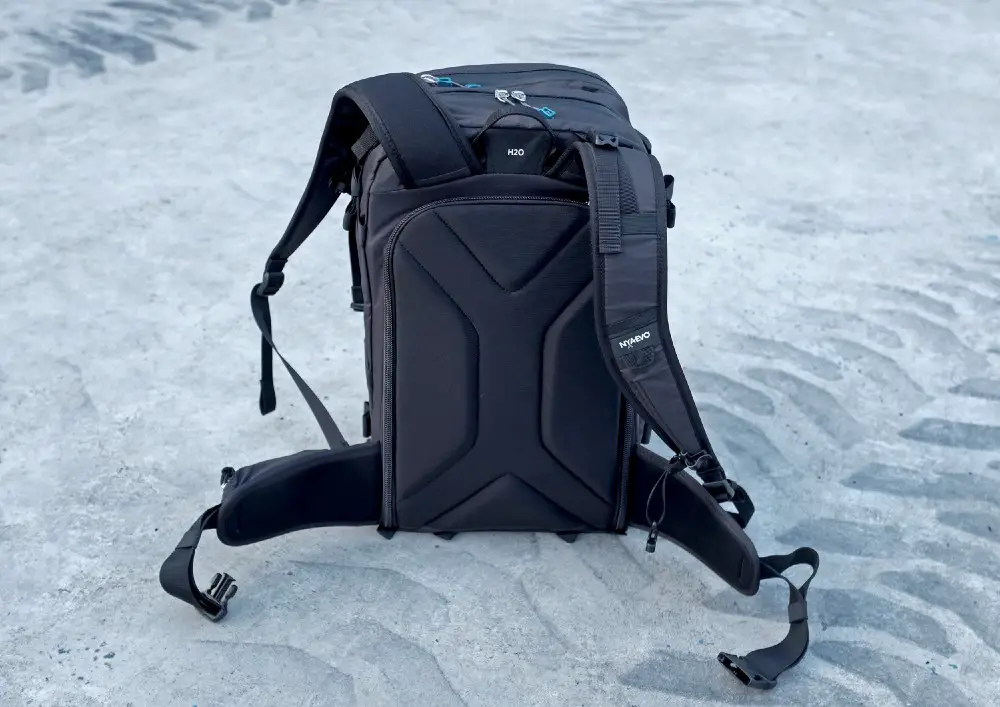
Excuse the cheesy rhyme, but it really does help to remember that S-shape shoulder straps are generally much better for your back than vertical straps. Contoured straps are more tailored to your body and are consequently more likely to sit comfortably on your back.
They allow for a more natural arch which ensures no back pain. They will also reduce the amount of rubbing on your skin and are far more comfortable than the straight alternative.
Opting for a wide, contoured strap is your best bet for finding a comfortable backpack which will not move around too much or rub while you walk.
Many backpacks which are specifically designed for women will be specially proportioned so they don’t dig into your neck or inner arms. This definitely works well for some people, but it is always worth checking how the backpack fits you specifically, as no two female bodies are the same.
Always Adjustable
If you have come this far on your hunt for the perfect backpack, it is unlikely that you will be faced with any products that do not come with an adjustable straps. The main thing to look for is that you can adjust the pack so that it fits your back snugly.
Although many companies claim to have a superior suspension system, most adjustable straps are more or less the same. Try the back on and have a wiggle to see if the bag slips or doesn’t sit quite right.
It is also a good idea to check the stitching on the shoulder straps to make sure they are the highest quality. If the stitching is done poorly, the backpack won’t last as long and certainly won’t be the investment piece you are after.
Hip Belts
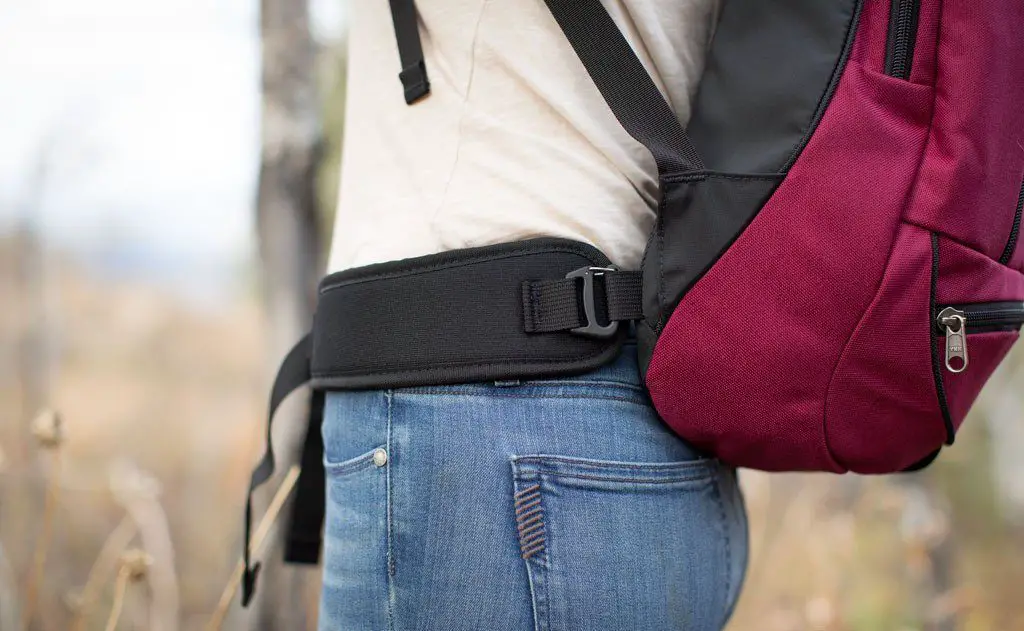
If you are planning on using your backpack for travel or hiking, a hip belt really is a must-have feature. A hip belt can transfer up to 90% of the weight of your luggage from your shoulders to your hips.
When properly fitted, the hilp belt should rest on top of your hip bones and you will instantly feel the weight redirect from your shoulders, to your much sturdier and stronger hips.
To determine the size of your hip belt, you should aim to find one which sits slightly above your hip bones and tightens enough to fit snugly. Some companies, such as Osprey, will have comprehensive fit guides along with their product.
Generally though, you will be able to feel if the hip belt is working once you have loaded up your bag.
What About Sternum Straps?
You might have noticed that some backpacks also come with a sternum strap. These are chest straps which are designed to give you even more support. They provide support for the rest of your body and also reduce strain on your shoulders.
If the choice is between a hip belt and a sternum strap, you should always opt for the hip belt. That said, sternum straps are a great design feature and you can quite easily buy them as an add-on and attach them yourself if you wish.
Section Summary:
- Choose shoulder straps with thick padding and decent air flow.
- Contoured straps are far more comfortable than traditional vertical straps.
- Make sure the adjustable straps adjust to your unique size.
- Always choose a backpack with a hip belt if you are after a travel backpack.
- Make sure your hip belt sits comfortably above your hip bones.
- If you need extra support, consider adding a sternum strap too.
3. The Details: Some Final Points To Consider
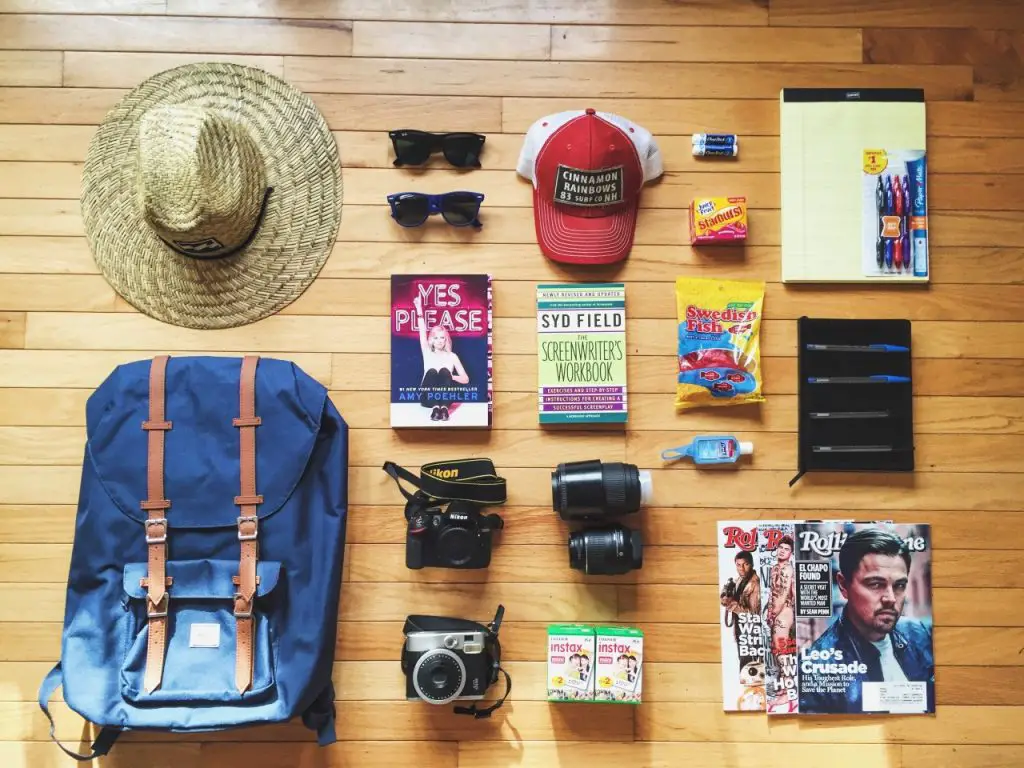
So far, this article should have given you a pretty in depth guide of the steps to go through when hunting for your perfect backpack. In this last section, I will share some final tips to answer any extra questions you might have.
How much should I spend?
This is the question that most people struggle to answer when choosing a backpack. If you spend too little, you risk the backpack falling apart after a few uses but if you spend too much, you risk overpaying for fancy features that you don’t really need.
Unfortunately, the later seems to be especially true when it comes to female backpacks. Although backpacks tailored for women in mind do tend to have special design features which make the backpack more comfortable for petite individuals, many companies seem to charge a lot more for backpacks for women for no obvious reason.
Generally speaking, anything over $250-300 seems like too much to spend on a backpack, even if it is really, really nice.
If you love the product, I’m not suggesting you don’t buy it, but I advise exercising caution and asking yourself what the extra cost is really giving you in return.
Some of the most credible companies sell durable, reliable backpacks for $100-150 and this seems like a good amount to spend on a product which is guaranteed to last.
It is also worth considering whether the backpack come with a warranty. I personally don’t mind spending a little extra for a warranty as it promises that the product will last.
Should I choose one with wheels?

Although wheels make running through an airport easier, they are generally not a great additional feature for traveling backpacks. Firstly, they are unnecessary added weight and secondly, the added frame needed to install wheels is likely to detract from your comfort.
If you want a backpack with wheels, you are going to be more limited which means you might have to compromise on some of the more crucial features, such as a hip belt.
Do I have to buy a women’s backpack?
Absolutely not. As I have said, every body is different and some women do prefer men’s backpacks. It really does depend on your body type. If you are a bustier woman, the sternum straps on a men’s backpack might bother you but if you are not, it will make no difference.
If you are more petite or have wide hips, a women’s backpack might be more suited to your body shape but if you are tall and have slim hips, you will probably have better luck finding a good fit in the men’s section.
I really cannot stress enough the importance of trying on the backpack. Finding a good fit comes down to how the backpack sits on you, so at the end of the day, the most important variable is always going to be you.
Leave a Reply